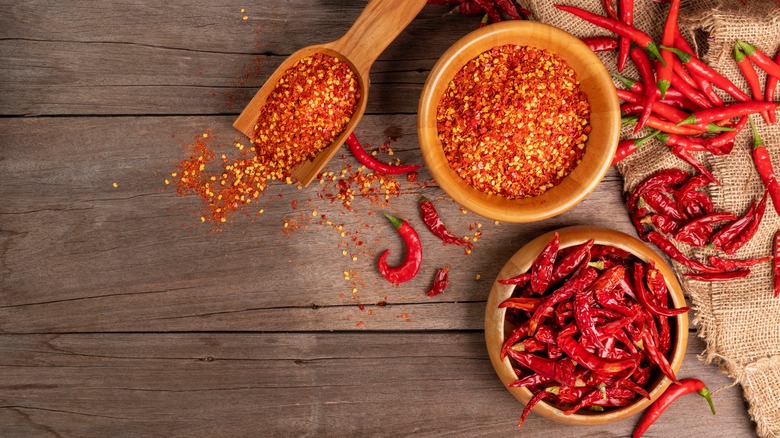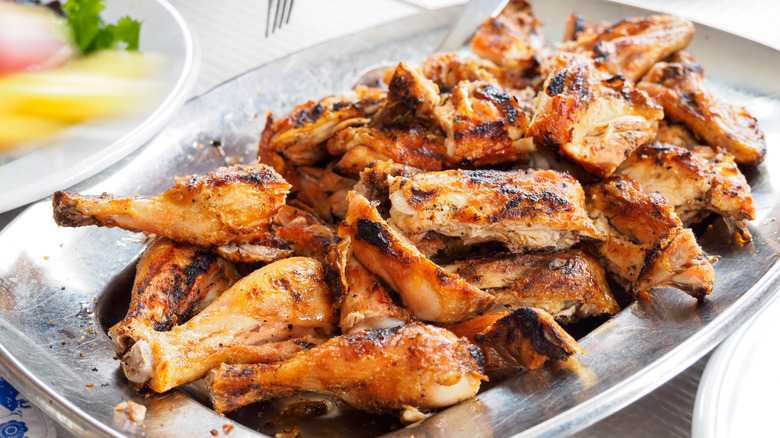What's Actually In Piri Piri Seasoning?
If you're not familiar with Portuguese or South African cuisine, you may not know too much about piri piri seasoning. And yet, this is a tasty blend worth trying, as it's a fantastic way to elevate everything from canned sardines to roast duck.
The piri piri (sometimes referred to as peri peri) blend is, unsurprisingly, centered around the piri piri pepper. It's dried and crushed, then typically mixed with paprika, garlic powder, and onion powder. You'll also generally see herbs like oregano and basil, along with a little salt. From here, however, the components of this seasoning can vary widely. Additional ingredients like cayenne and lemon may also make their way into the mix, along with herbs like thyme or coriander. In some instances, you may even see a little regular or brown sugar. At its core, however, piri piri seasoning is a mixture of spices and herbs, which makes it a tasty choice in a wide range of savory dishes.
Traditionally, piri piri seasoning is used to make dishes like Frango Piri Piri, which deploys the seasoning in a chicken marinade, and Piri Piri Oil, an infused olive oil. It can also be used as a rub for meats or to season anything from fries to soups to pastas.
From spicy pepper to versatile seasoning
You may also see the piri piri pepper called the African Bird's Eye Chili or African Red Devil Pepper, but either way, these fruits can deliver some serious heat. They clock in at around 175,000 on the Scoville scale, which makes them about 20 times spicier than jalapeños. Originally, it was the Portuguese who cultivated piri piri peppers in the 1400s, but they later introduced them to African countries, where their popularity spread. Because they're so hot, they're mostly diluted in this seasoning, or in peri peri sauce.
If you want to put this blend together at home, you're free to adjust the flavors to match your tastebuds. This also gives you the freedom to leave out salt if you want, which gives you more control over the salt content in your dishes later on. Once you make your mixture, it can last at peak freshness in an airtight container for about six months. When you're ready to cook with it, you may want to start by trying it with chicken. To branch out, sprinkle it on roasted veggies, fish, shrimp, wings, fries, and even burgers.

